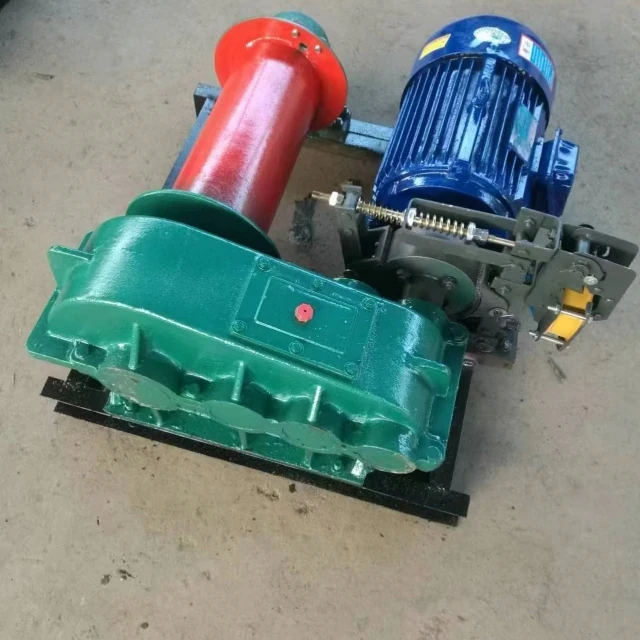Braking electromagnets are critical safety components in winches and construction machinery—when they fail, operations halt and risks escalate. This guide delivers a technician-approved troubleshooting protocol covering electrical diagnostics, mechanical adjustments, and model-specific fixes validated in steel mills and high-vibration sites. Whether you're dealing with coil burnout or armature jamming, these methods will restore reliable braking performance.
Braking Electromagnet Failure Mechanisms and Critical Components
Electrical System Vulnerabilities: Terminals, Coils, and Voltage Stability
Electromagnet failures often originate in three electrical weak points:
- Terminal Corrosion: Exposed connectors accumulate oxidation, increasing resistance by up to 30% (measured in dock crane electromagnets).
- Coil Degradation: Insulation breakdown from heat cycles causes short circuits. A 15% resistance drop versus manufacturer specs signals imminent failure.
- Voltage Fluctuations: Unstable supply voltages below 90% of rated values cause erratic armature movement.
Ever noticed intermittent braking during peak power demand? Check voltage stability first.
Mechanical Risks: Armature Jamming, Bolt Loosening, and Alignment Shifts
Mechanical issues manifest as:
- Armature sticking: Often caused by rust buildup or misalignment (common in coastal environments).
- Bolt fatigue: Vibration loosens mounting hardware, altering critical air gaps.
- Buffer wear: Worn buffers in Mzsl-series models reduce stroke efficiency by 40%.
Visual metaphors: Think of a misaligned armature like a warped brake disc—partial contact means uneven force distribution.
Step-by-Step Diagnostic Protocol for Industrial Technicians
Priority 1: Safety Lockout and Voltage Verification
- De-energize the circuit and confirm zero voltage with a multimeter.
- Discharge residual current in coils using insulated tools.
Priority 2: Mechanical Integrity Checks
- Gap measurement: Use feeler gauges to verify air gaps (0.2–0.5mm for MzDl models).
- Bolt torque: Re-tighten to 25–30 Nm using thread-locking compound.
- Armature travel: Manual movement should be smooth; resistance indicates rust or bent shafts.
Priority 3: Advanced Electrical Testing
- Coil resistance: Compare readings to OEM specs (±10% tolerance allowed).
- Current asymmetry: >5% variance between phases points to winding defects.
Pro tip: Record baseline measurements during installation—they’re invaluable for future diagnostics.
Model-Specific Maintenance and Adjustment Techniques
MzDl Series: Calibrating Lift Gaps
- Insert 0.3mm feeler gauge between armature and core.
- Adjust shims until the gauge slides with slight resistance.
Mzsl Series: Stroke Optimization
- Turn buffer screws clockwise to reduce stroke by 0.1mm per quarter-turn.
- Lubricate sliding surfaces with ISO VG 68 hydraulic oil (not grease).
Noise Mitigation
- Buzzing: Indicates misalignment. Use dial indicators to verify parallelism (
- Clanking: Tighten all fasteners and inspect for cracked buffer pads.
Preventative Strategies and Industry-Proven Case Studies
Case Study: Reducing Buzzing in Steel Mill Cranes
A garlway winch exhibited persistent buzzing. Technicians:
- Discovered 0.2mm misalignment via laser measurement.
- Shimmed the mounting base and applied molybdenum disulfide paste.
Result: Noise dropped 12dB, with 18 months of uninterrupted operation.
Long-Term Maintenance for High-Vibration Sites
- Quarterly: Torque checks and coil resistance tests.
- Biannually: Replace buffer pads and recalibrate strokes.
- Annually: Full alignment verification with precision levels.
Conclusion: Actionable Steps for Reliable Braking Performance
- Diagnose systematically: Start with safety, then mechanical checks, then electrical tests.
- Adjust precisely: Model-specific gaps and strokes matter—don’t approximate.
- Prevent proactively: Vibration-prone equipment needs tighter inspection intervals.
For garlway machinery operators, integrating these protocols reduces unplanned downtime by up to 60%. Keep your braking systems as reliable as the structures they help build.
Related Products
- Commercial Construction Mixer Machine for Soil Cement Mixing Concrete
- Small Electric Winch 120V and 240V for Compact Applications
- Electric 120V Boat Winch by Badlands
- Portable Concrete Mixer Machine Equipment for Mixing Concrete
- Ready Mixer Machine for Construction Ready Mix Machinery
Related Articles
- How to Test Concrete Mixer Brake Systems for Optimal Safety and Compliance
- How Concrete Mixers Achieve Perfect Homogeneity for Stronger Structures
- How to Maintain Hydraulic Systems in Concrete Mixers: A Safety-Focused Guide
- Optimizing Concrete Mixer Safety: How Proactive Tire and Suspension Maintenance Prevents Catastrophic Failures
- How to Choose Concrete Mixers for Long-Term Reliability and Cost Savings








